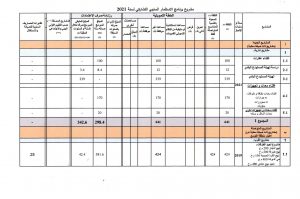Little princess Anaviso

Protecting a loan can frequently feel like a great labyrinthine procedure. To decide the creditworthiness, lenders ask for endless conditions and you can cautiously pore more than individuals aspects of the monetary wellness.
Sometimes, even with dealing with one cutting-edge network, you find yourself that have only a strong getting rejected. It is a beneficial taxing experience laden up with unknowns.
To raised browse the loan app procedure, proactively assess the criteria you to definitely feeling the loan eligibility and terms and conditions. A serious metric very lenders evaluate ‘s the personal debt-to-income (DTI) ratio.
To help you somewhat enhance your likelihood of approval, you need to know how to determine financial obligation-to-earnings proportion and in the end improve they.
What is Personal debt-to-Earnings Ratio?
Your debt-to-earnings (DTI) ratio try a button economic metric giving understanding of exactly how better a debtor takes care of its loans relative to their income. It is a component that greatly influences the borrowed funds recognition processes, as lenders utilize it-along with other issues like credit rating and monetary capabilities-to check on good borrower’s capacity to pay off a loan.
?? Front-Prevent Proportion vs. Back-End Proportion

- Front-prevent ratio Called homes check this link right here now ratio or mortgage-to-earnings proportion, it is the part of the terrible month-to-month money ahead of tax that are regularly pay their houses can cost you. They surrounds most of the costs to have settling your loan principal, desire, assets taxes, homeowners insurance, organization fees, or other property expenditures.
- Back-prevent proportion Labeled as debt-to-income ratio, this refers to the portion of your own terrible month-to-month earnings one cover their most other debt obligations, together with credit card bills, car loans, and any other revolving credit. Moreover it generally speaking comes with homes can cost you within the computation.
Lenders tend to calculate an effective borrower’s right back-stop ratio to see what portion of the money goes toward paying off personal debt. This short article offers the former particular understanding of the newest latter’s creditworthiness.
Exactly how Obligations-to-Money Proportion Has an effect on Loan Acceptance
Lenders use your DTI proportion to choose your own borrowing from the bank risk. It is an established product observe how good you could do your existing obligations, whenever you could potentially manage additional borrowing loans.
When you have a high DTI proportion, lenders tend to see you while the a great riskier borrower, as the majority of your revenue are generally allocated for repaying your present obligations. That have limited income so you’re able to allocate, you happen to be more likely to skip money, leading you to an unideal borrower out of a good lender’s angle.
Less DTI proportion try preferable, whilst signals so you’re able to loan providers you have enough money so you’re able to protection all personal debt. This is going to make you a quicker high-risk and a lot more credible borrower from inside the the vision.
Whether you are making an application for home financing, a car loan, a consumer loan, and other type of credit, once you understand the debt-to-income proportion leads to making sure your financial maturity.
That said, lenders enjoys more DTI standards per financing kind of. By using out a construction financing with a high DTI proportion, loan providers ount and you may financing terminology.
It isn’t really the way it is for folks who get a good personal bank loan, given that lenders typically have a high allowable limitation DTI private mortgage circumstances than for mortgage loans. There are of numerous unsecured loan available options having highest obligations-to-income rates.
? Do Your DTI Proportion Apply at Your credit rating?
Your debt-to-money proportion will not personally impression your credit rating, since the credit bureaus don’t foundation income in their calculation. What bureaus evaluate is the borrowing utilization, otherwise how much cash credit make use of according to their credit limit.
A top DTI proportion often overlaps with a high credit use ratio, that will negatively effect your credit score. Simply because highest personal debt accounts according to borrowing constraints inform you a more impressive monetary exposure in order to lenders. Lowering your borrowing application by paying off the debt normally likewise reduce your DTI proportion and replace your credit history.
 العربية
العربية


